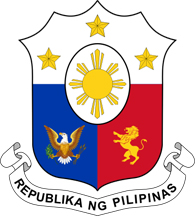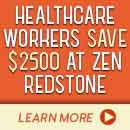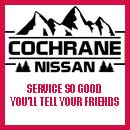- News Front Page
- Uncategorized
- Headline News
- Filipino Calgarian
- Business
- Pinoy News
- Community News
- Publisher's Note
- Kuya Bong's Kusina
- Views and Opinions
- Maikling Kwento
- Alberta News
- OFW – Month
- Travel News
- Health and Lifestyle
- Pinoy Toons
- Pinoy Spirit
- Entertainment
- The Philippine Lawyer
- Horoscope
- Greetings
- Editorial
- About Us
- Greetings From the Prime Minister
- Greetings from the President of the Philippines
- Greetings from the Premier of Alberta
- Greetings from the Mayor of Calgary
- Advertise With Us
- Disclaimer
- Subscription
Publisher's Note
- Publisher’s Note
Dear Kababayans, I hope you are all doing well this April and are keeping safe and healthy during this trying time. Last month we saw businesses closing down and workers getting laid off because of the economic shutdown that was created by the Coronavirus Pandemic. This puts a lot of stress on people as bills just [...]
Visitors to Pinoytimes
Page added on January 21, 2019
High Blood Pressure: Nutrition Tips

DASH diet
The DASH (Dietary Approaches to Stop Hypertension) diet can help you lower your blood pressure. It includes eating fruits, vegetables, and low-fat or non-fat dairy foods. For more information on the DASH diet, see:
High Blood Pressure: Using the DASH Diet.
The food groups and serving sizes in the table below are based on the DASH diet from the U.S. National Heart, Lung, and Blood Institute. These servings may not match Canada’s Food Guide.
Follow these daily recommendations:
Cut down on fats
Eating a diet low in both saturated fat and total fat will help lower your blood pressure.
Although you need some fat in your diet, limit how much saturated fat you eat. These fats are mostly in animal foods, such as meat and dairy foods. Coconut oil, palm oil, and cocoa butter are also saturated fats. Palm and coconut oils are often found in processed foods, including crackers and snack foods.
Follow the recommendations below to include healthy fats in your diet. DASH recommends that a little less than a third of your total calories come from fats. And most of these calories should come from healthy fats such as vegetable oils, nuts, and fish. Very few calories should come from saturated fat, which is found in animal meat, dairy products, and processed foods.
Cut back on sodium
There is a link between eating sodium and having high blood pressure. Reducing sodium in the diet can prevent high blood pressure in those at risk for the disease and can help control high blood pressure. Limiting sodium is part of a heart-healthy eating plan that can help prevent heart disease and stroke.
Most people shouldn’t eat more than 1,500 to 2,300 milligrams (mg) of sodium a day.
Sodium and High Blood Pressure
Healthy Eating: Eating Less Sodium
Low-Salt Diets: Eating Out
Eat fewer processed foods
Cutting back on the amount of processed or refined foods you eat can help. These foods, such as canned and instant soups, packaged mixes, and snack items, don’t have enough calcium, potassium, and magnesium—the very nutrients you need to help lower your blood pressure. And these foods can be high in sodium, saturated fats, and trans fats.
Vegetarian diet
You also may try a vegetarian diet. In general, vegetarian diets reduce blood pressure, although experts don’t know exactly why. The DASH diet could easily be a vegetarian diet if legumes (for example, beans, lentils, peas, and peanuts) were substituted for meat. Vegetarian diets tend to be higher in potassium, magnesium, and calcium, as does the DASH diet. Vegetarian diets also are higher in fibre and unsaturated fats than other diets.
Potassium, calcium, and magnesium
Not eating enough foods containing potassium, calcium, and magnesium may contribute to high blood pressure.
To get enough of these nutrients, eat a balanced diet that contains plenty of fresh fruits, vegetables, dairy foods, and whole grains. Most people do not need to take dietary supplements to get enough potassium, calcium, and magnesium.
Good sources of potassium
All fresh fruits and vegetables and meats are good sources of potassium. Examples include the following:
Bananas, cantaloupe, oranges, and orange juice
Raw or cooked spinach, lima beans, zucchini, broccoli, and artichokes
Potatoes
Legumes (cooked dried beans and peas) such as pinto beans, chickpeas (garbanzo beans), and lentils
Nuts and seeds
Good sources of calcium
Low-fat dairy products (yogurt, skim milk, cheese)
Good sources of magnesium
Legumes (cooked dried beans and peas), seeds, and nuts
Halibut
Milk and yogurt
Brown rice and potatoes
Tomatoes
Bananas and watermelon
Leafy green vegetables
Dietary supplements
The safest way to ensure good nutrition is through a balanced, varied diet instead of through nutritional supplements.
Very large amounts of any of these minerals taken in the form of a supplement can cause problems, including possible death. See your doctor before taking large quantities of any supplement.
What does not lower blood pressure?
Garlic and onions
Although eating garlic and onions has been recommended to reduce blood pressure, evidence shows that only very small decreases in blood pressure may result.Health ToolsHealth Tools help you make wise health decisions or take action to improve your health.
For 24/7 nurse advice and general health information, call Health Link at 811.
If you need an interpreter just say the language you need.
Current as of: December 6, 2017
Source: www. myhealth.alberta.ca
Translated with permission from Healthwise Inc.©. This material is for information purposes only and is not intended to replace the advice of care you get from your provider or other healthcare professional. Always consult your health professional for medical diagnosis and treatment.
RELATED STORIES
LATEST HEADLINES
- Foreign representatives now exempt from travel restrictions
- Alberta records two more deaths and 111 new cases of COVID-19
- Albertans can now access 20 million free, non-medical face masks to help prevent the spread of COVID-19
- House Committee of the Whole OKs bill giving ABS-CBN provisional franchise until October
- COVID-19 support for employers and employees
COMMUNITY NEWS
 UNDER A “NEW NORMAL,” PCG IN CALGARY RESUMES PASSPORT SERVICES
UNDER A “NEW NORMAL,” PCG IN CALGARY RESUMES PASSPORT SERVICES Canada turning to foreign airlines to bring home citizens stranded by pandemic
Canada turning to foreign airlines to bring home citizens stranded by pandemic Calgary shopping malls adopting safety measures ahead of Thursday’s planned reopening
Calgary shopping malls adopting safety measures ahead of Thursday’s planned reopening Announcement from The Philippine Consulate General in Calgary
Announcement from The Philippine Consulate General in CalgaryPINOY STORIES
 Over 22 million students now gearing up for school – DepEd
Over 22 million students now gearing up for school – DepEdHAVE YOUR SAY
Lorem ipsum dolor sit amet, consectetur adipiscing elit, dolor sit ipsum.PROMOTIONAL BLOCK
Lorem ipsum dolor sit amet, consectetur adipiscing elit, dolor sit ipsum.TRAVEL NEWS
PINOY TOONS
Tags
Archives













